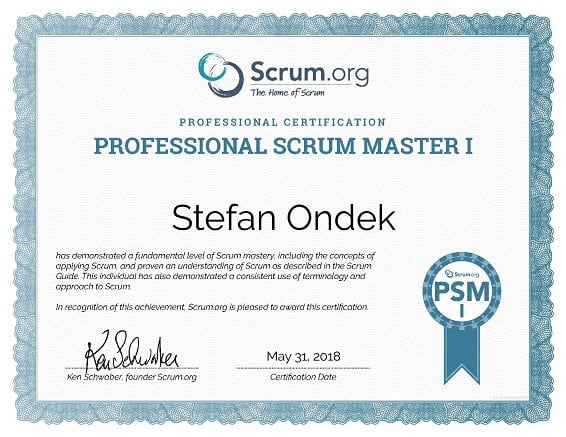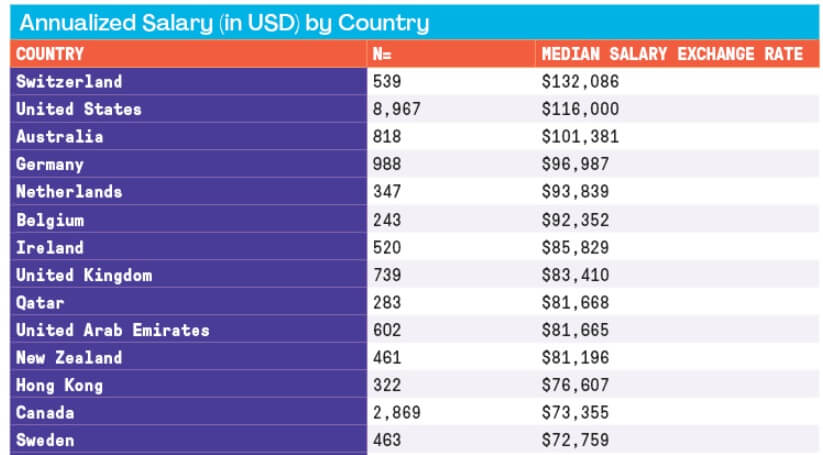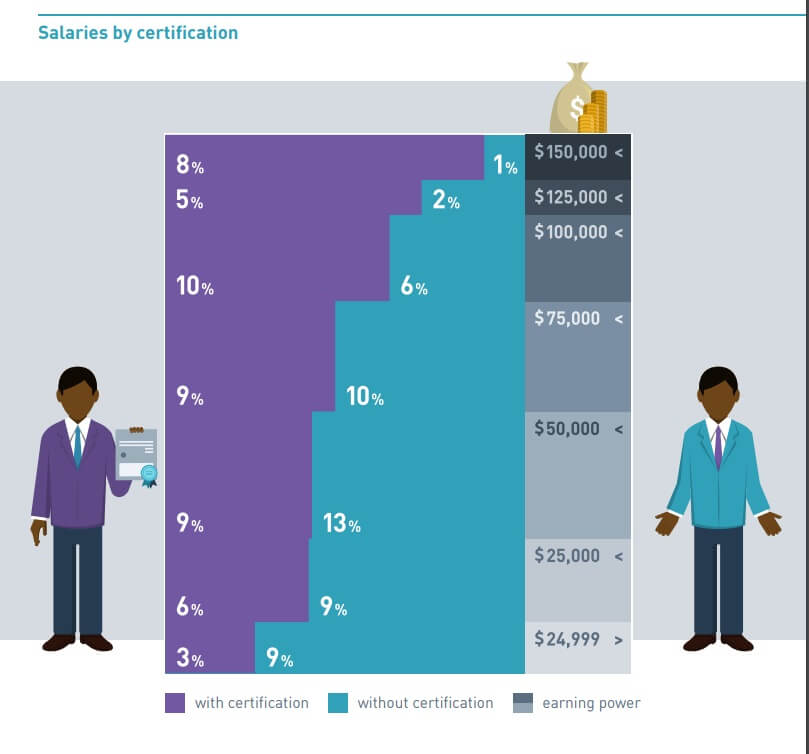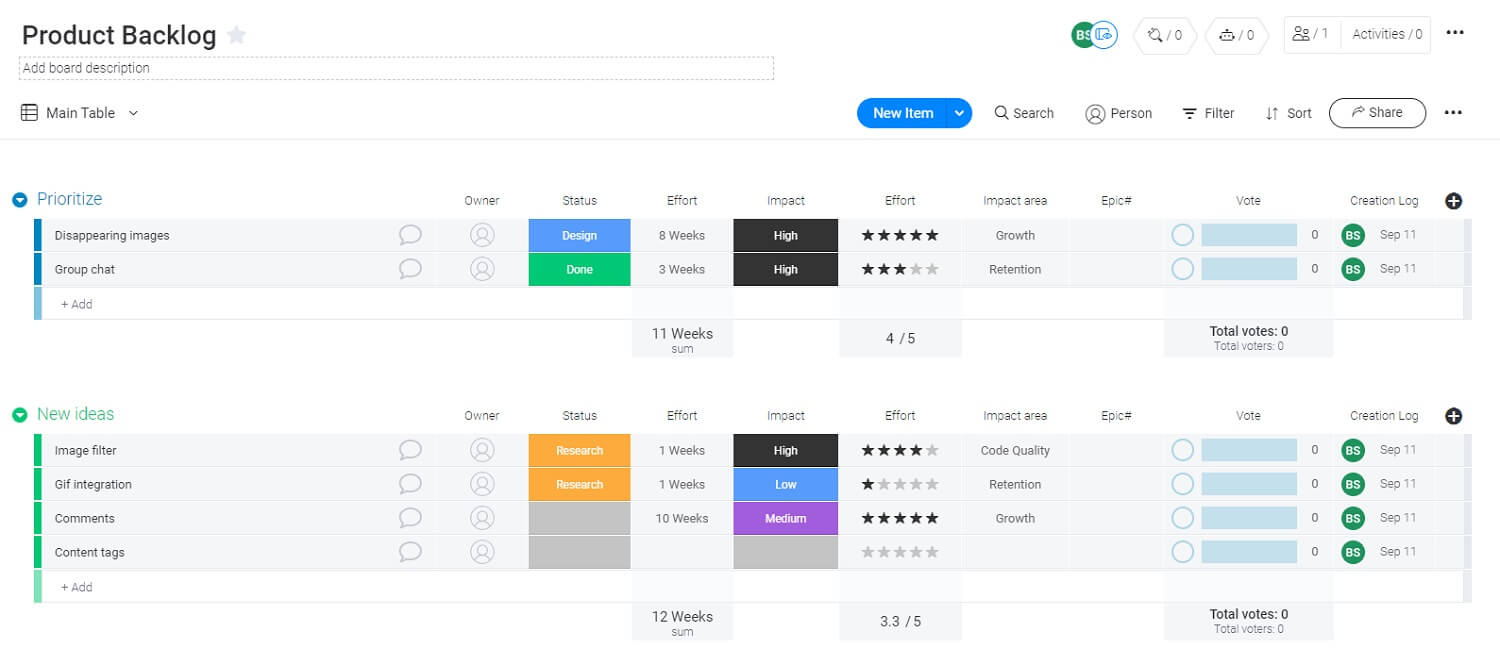Being in charge of a project isn’t a walk in the park.
Without the right foundation it can feel more like walking through a field full of landmines. While blind-folded.
Certification can help you gain the knowledge you need for the job, while also resulting in a nice pay bump.
But between PMP and Scrum, which option will most likely help your career? Which training and project management certification should you choose?
In this article, we’ll compare the PMP and Scrum certifications, their cost, impact on salary, and the differences in the methods themselves.
Scrum vs. PMP: Certification
If you want a formal certification of your skills as a project management professional, you have many different options.
But the most popular is the Project Management Professional (PMP) certification by the PMI institute.
There are over 1.037 million PMP certified project managers around the world.It’s most valuable for companies that use a more traditional approach to project management.
The PMP designation is largely based on the Project Management Body of Knowledge (PMBOK) methodology, which is often conflated with traditional project management methodologies like the Waterfall model. (More on this later.)
If you want to work for smaller, more Agile companies like groundbreaking startups, chances are much higher that they’re working with Scrum.
There are two main certifications for Scrum: the Certified ScrumMaster (CSM) by Scrum Alliance, and Professional Scrum Master (PSM) by Scrum.org.

341,882 Scrum masters have some level of the PSM certification.
Before we go any further, we should point out that Scrum certification is not the same as Agile certification.
Having the PSM or CSM certificate shows you know Agile to some extent, as you need to be familiar with the overarching Agile principles and values.
But it only certifies you for one Agile framework — Scrum.
If you want to consult companies on Agile transformation, or you want to work for a company that embraces a different framework, like SAFe, you’ll need to look into other certification options, such as becoming a Certified Agile Coach. Read this post for more on agile project management certification.
Alright, now that’s clear, let’s jump back to Scrum vs PMP.
Impact on salaries and earning power
In the US, the average project manager’s salary is $66,137 per year according to Glassdoor.
The PMI’s official salary survey showed a much higher annual income. Respondents had a median salary of $116,000.

And project managers with PMP certification had a 22% higher salary, on average.
According to Glassdoor, the average salary for the Scrum Master role is $97,319 in the US.
And, according to the 2019 Scrum Master Trends report, 51% of respondents made $75,000 or more per year. Certification differentiates the top earners.

To sum up all those numbers:
- Both the PMP and Scrum certification appear to directly impact earning power
- But, someone with their PMP tends to make more than someone with Scrum certification
Cost of certification
Taking the PMP exam to get certified costs $550 (USD).
Training for the course can cost up to $3,000, but you can also self-study the principles with the PgMP handbook or PMBOK guide. These books cost around $60 each.
Next, let’s take a closer look at what the Scrum certifications cost.
The PSM1 certification test costs $150, and official courses start at around $500.
The CSM exam is typically only administered as part of a CSM course. A course can cost anywhere from $595 to $1,500. The price depends on location, instructor, and whether the course is in-person or online.
Which is better; PMP or Scrum master?
The salary implications and costs of certification are not different enough to make one option the clear winner. So it really depends on your career goals and current project management experience.
Do you want to work in an industry that focuses on PMBOK principles? PMP is the way to go.
Do you want to work as part of small, Agile Scrum Teams in startups, tech, and other innovative companies? You should become a certified Scrum master.
Scrum vs. PMP: Method
Next, let’s examine what the actual project management methodology looks like for each option.
PMP is focused on the PMBOK model, so let’s start there.
The PMBOK model
In the past, people used to equal PMBOK with the top-down Waterfall approach. This is because it divides project management into 5 different phases or process groups.
- Initiating
- Planning
- Executing
- Monitoring and controlling
- Closing
However, PMBOK focuses on overarching principles and doesn’t prescribe methodology.
In the context of a single Sprint or cycle in Agile or Scrum, you can still apply many of the PMBOK principles — You’re just doing the 5 phases per iteration instead of once per project.
But, you’ll find much of the PMBOK guide is written to assume you’re using a top-down, pre-planned framework like Waterfall.
It also tends to emphasize a lot of documentation, which is something Agile advises against.
Scrum framework
The Scrum framework is designed specifically for the Agile methodology. Instead of trying to figure out how to adapt PMBOK to work for Agile, Scrum lays out a clear step-by-step solution.
Rather than following 5 clearly defined phases that happen once during a project, you divide larger projects into smaller sprints, lasting 1–4 weeks.
There are still 5 recognizable phases within each sprint, but they go by different names:
- Pre-planning (or Backlog refinement)
- Planning (aka Sprint planning)
- Working (Execution)
- Sprint review (or Product increment review)
- Retrospective
To learn more about the Scrum framework check out our article on How to run a Scrum sprint.
What is the difference between PMP (PMBOK) and Agile?
Both PMBOK and Agile methodologies prescribe high-level principles rather than a concrete framework to guide your approach.
The biggest difference between PMBOK and Agile lies in their attitude toward change and stakeholder involvement.
PMBOK emphasizes structure and control — change is viewed as a necessary evil. Agile, on the other hand, embraces and encourages change.
In PMBOK, you mainly involve stakeholders during early-stage planning. But in Agile the collaboration continues throughout the entire project.
Scrum vs. PMP: Sometimes the right choice is both
Unfortunately, like with most things in this world, there’s no cut and dry right answer.
For some companies, Scrum will be an obvious choice, while others will do better with PMBOK.
For many, the best choice is often to implement both methodologies in different areas.
Likewise, you may decide to obtain both certifications over time.
PMBOK for familiar or ongoing projects
If you know a project inside and out, you don’t need a revolutionary approach.
Would an agency delivering copy or creative to a steady client for the 100th time see clear benefits from creating a Scrum team? Probably not.
For predictable, familiar projects, using PMBOK principles within your existing project team is probably your best bet.
PMBOK’s Work Breakdown Structure (WBS) is a good starting point.
Breaking your projects down into a WBS will help you better manage the different moving parts in a project while still seeing how they’re all connected.
You can use our Project WBS template to manage human resources more efficiently, and keep projects running according to schedule.

Scrum for new and unpredictable projects
But working within the confines of a traditional workflow isn’t always going to be the best option.
For new and complex projects, like creating a new product targeting a new vertical, the Scrum framework is perfect.
A good place to start is to find a logical product owner. They could be a key customer or someone who has a deep understanding of your customers.
For example, if you’re developing proposal software for salespeople, your internal sales manager could be a good product owner in Scrum.
The product vision and product backlog are user-focused, not technical or feature-focused. So a non-technical person can still highlight user stories (features from the user’s perspective).

This will help you gauge the scope of the project, and establish a complete Scrum team with all the skills necessary to complete it.
An Agile project approach lets you hit the ground running, and adapt alongside the market and customer base.
Even without experience in a market, you can create an innovative product that customers want.
Check out our comprehensive guide to the Scrum methodology or use our Scrum planning template to jump right in.
Conclusion
Becoming certified in Scrum or PMBOK are both great career moves depending on your situation.
It all comes down to where you want to be in the future.
monday.com’s templates make it easy to test each model of project management in your current company.
For example, you can start with our WBS template, and see if it improves your workflow.
FAQs
What is the difference between PMP and Scrum?
PMP: This is all about traditional project management, following a step-by-step process (Initiating, Planning, Executing, Monitoring and Controlling, Closing). It’s great for complex projects with clear requirements.
Scrum: This is an Agile method that breaks projects into short, repeatable sprints (1-4 weeks). It's super flexible, focuses on quick changes, and keeps everyone in the loop. Perfect for projects that need to adapt on the fly.
Is Scrum master higher than project manager?
Not really, they just have different roles:
Scrum master: helps the team follow Agile practices, removes obstacles, and supports continuous improvement.
Project manager: manages the whole project, plans, coordinates, and keeps everything on track.
It’s not about who’s higher up, but about what the project needs and how your organization is set up.
Can a Scrum Master get a PMP?
Absolutely. A Scrum master can get a PMP:
Skills boost: adds traditional project management know-how.
More job options: makes you more versatile and opens up more opportunities.
Requirements: you’ll need some project management education, hands-on experience, and to pass an exam.
Having both Scrum and PMP certifications makes you a powerhouse for managing a variety of complex projects.

